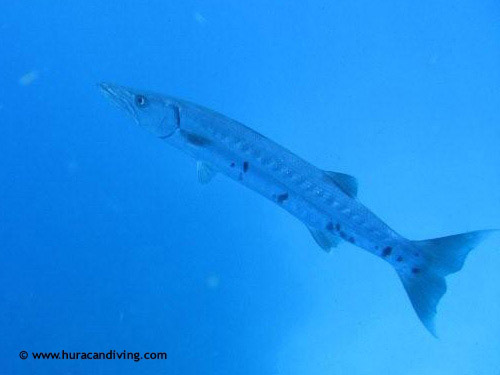Half Moon Caye Wall is diving at a steep drop-off just south of the cay with spectacular marine life.
| Name Dive Site: | Half Moon Caye Wall |
| Depth: | 19-137ft (6-42m) |
| Inserted/Added by: | lars, © Author: Lars Hemel |
| Rated: | Rated 4.1, 8 votes |
| Specifications: |     |
Send us your images for this dive site[Add Image][Add Movie]
Half Moon Caye Wall is one of the most popular dive sites in Belize. Sitting just south of Half Moon Caye, diving here is often combined with a short lunch break and red-footed booby bird expedition on shore. Half Moon Caye Natural Monument is about forty acres large open to tourists all year long and famous for its booby colony, frigate birds and many iguanas. There is a short trail that ends at one of the lookouts above the tree line from where you can see the thousands of nests. Most tourist get here on a day tour but it is also possible to arrange camping trips making sure you are the first one out on the reef.
Most dive boats drop their anchor at a grassy sandy area where you can find many sand eels, stingrays and hogfish. It is one of the few places in Belize to spot eels so take your time trying to get a close look at them. They are shy and withdraw their bodies in the white sand at the slightest unexpected movements. It is an area with spur and groves all of different depth but all common in that they lead to the drop-off. Follow one of the living spurs seaward across small caves, great coral formations and overhangs until you reach the sheer wall. The reef is filled with groupers, toadfish, razorfish, yellowtail snappers and pelagic species. Pay attention to spotted eagle rays and mantas out in the blue. It is a diving paradise with huge variety in aquatic life, wildlife and underwater landscapes.

[Add Message]Messages from readers:
Name: lighthouse_reef
Half Moon Wall is incredible. The vertical wall at times cuts back in on itself, displaying many interesting features. Sponges protrude t right angles to the reef, competing for space with gorgonians and sea fans. Mountainous star and giant brain coral are interspersed with smaller clumps of staghorn, brain and lettuce coral. Anchored amongst these are the hydrozoans and tunicates.
The top of the wall is ablaze with fish life: large angelfishes in groups of four or five; every variety of butterflyfish, always in pairs; large squirrel fishes posing outside their holes; and small grouper, impatient to see the world deeper down, looking and behaving in the same way as their much larger parents.
Turtles are common-they lay their eggs on Half Moon Caye-but the real excitement is generated by pelagic. This is the only sheltered dive site on the eastern side of any of the three atoll reefs and divers can expect some really amazing encounters. Oceanic whitetip sharks (complete with their attendant pilotfish), lemon, blacktip and bull sharks are likely to be seen. The very largest of manta rays and good specimens of spotted eagle rays are frequently seen. At the very limit of safe diving are very large jewfish- some so large they might stalk the diver, although they pose no danger. The wall continues down well beyond the safe reach of scuba divers.
[Add Divelog]Divelogs from members:
Name: lars, © Author: Lars Hemel
We saw some excellent corals. One of the biggest moray eels I have ever seen. Divemasters were feeding the fish in the end resulting in a huge swarm of yellowfin fish. The most curious sight was some sort of pre-dinosaur looking fish; one I expect to come from the deep.
Name: lars, © Author: Lars Hemel
Although a beautiful dive site; everything looks disappointing after the Blue Hole. I was still colorful with plenty of fish and excellent coral growth.
I also found out that dive schools are very strict about depth and diving as there were two groups. One with scuba divers that dove a bit too long or too deep at dive site the Blue Hole. They had to stay shallower at Half Moon Caye.
Take a look at all the pictures!
© 2006-2024 GreatestDiveSites | About Us | Terms | Links | Sitemap | Contact | Best Dive Sites | Photos | Best Dive Photos | Movies | Best Dive Movies | Send images | Consent



